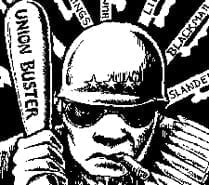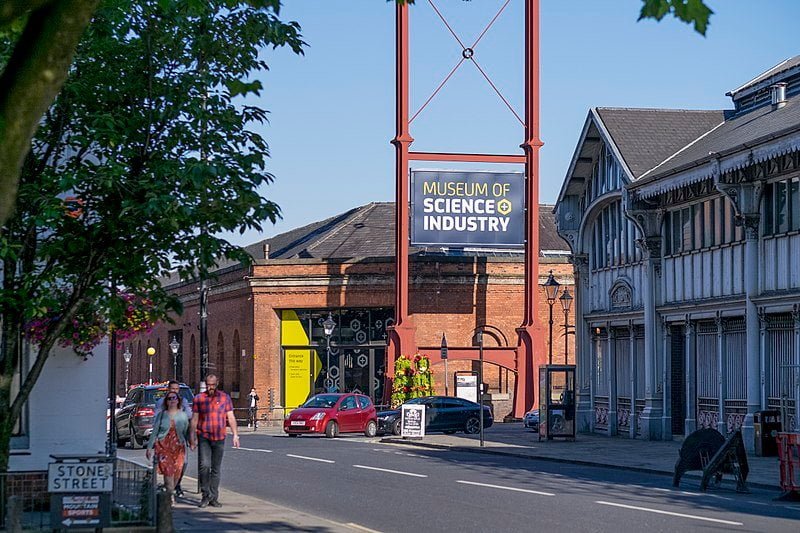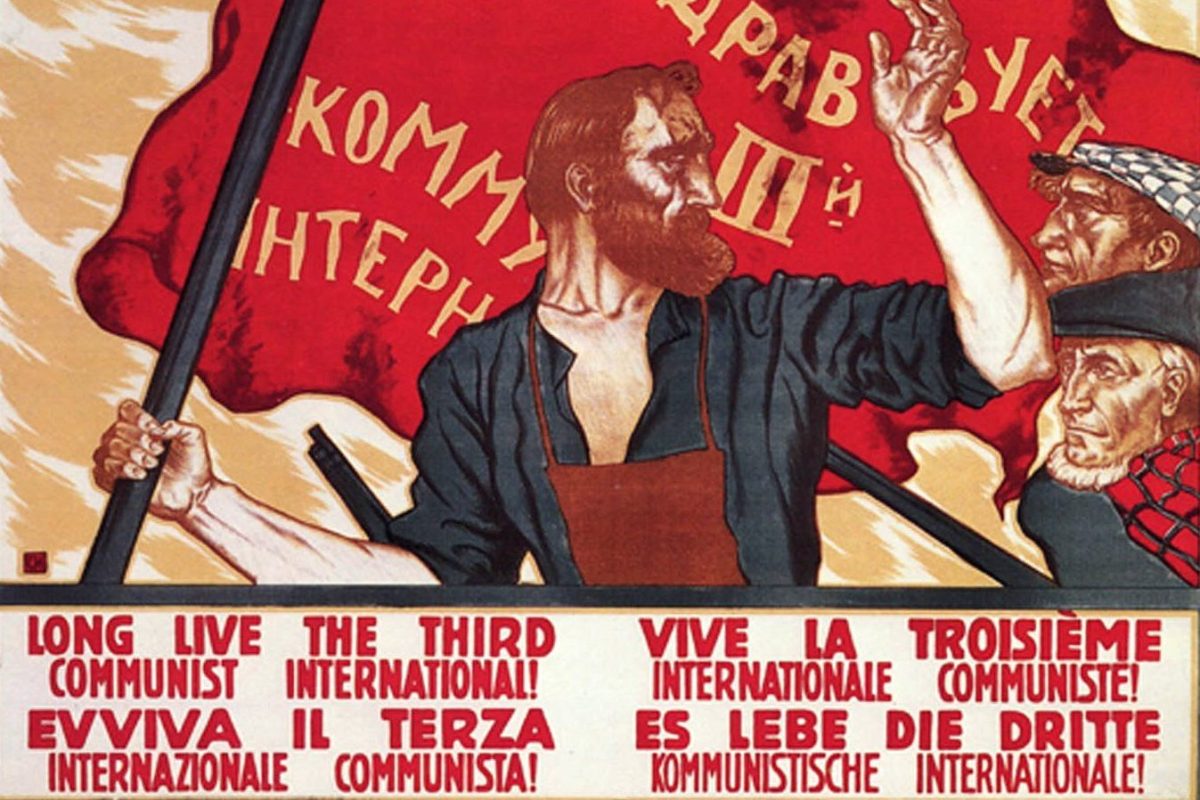Union
busting is as old as trade unions themselves. Ever since workers started to
form their own organisations back in the 18th century to fight for
decent working conditions, employers have tried to break them. In the old days
workers would be beaten, imprisoned, and sometimes killed for participating in
trade union activities. Better working conditions meant less profits for the
boss, and a harsh hand was dealt to keep the rich ruling minority firmly in charge.
Nowadays,
in developed countries like Britain and the USA, you’d be forgiven for thinking
that this kind of oppression towards working people had become a thing of the
past. After all, we live in a democracy. But the case studies below show quite
the contrary. Although
techniques have changed far
from becoming a thing of the past, union busting has swelled to become a
multi-million dollar industry.
After the 1935 US
National Labor Relations Act established the right to join a union and bargain
collectively, companies seeking to operate union free could no longer use the
bare-knuckle tactics of old. They needed more subtle and sophisticated tactics
to fight the trade unions. What they needed were private expert companies that they could hire to do their dirty
work for them, companies specialising in union avoidance services.
Until the 1970s, however, professional union avoidance consultants were small
in number and were not yet part of mainstream industrial relations. Most
employers kept quiet about the idea of hiring consultants. One consultant
stated that employers “used to sneak to
seminars about keeping your plant non-union. They were as nervous as whores in
a church! The posture of major company managers was, ‘Let’s not make the union
mad at us during their organising drive or they’ll take it out at the
bargaining table.”
That mindset changed
dramatically in the 1970s and ‘80s, a period of significant expansion for the
union avoidance industry, when most employers shed their inhibitions about recruiting
union busting consultants. The size of the consultant industry increased
tenfold during the 1970s, as employers sought out firms that could help them
defeat trade union formation and expansion. Union busting consultants organised
thousands of anti-union campaigns, targeting areas of growing importance to
unions like healthcare, and white-collar employees. Today, the monopolisation of big business has led to
giant companies accumulating enormous profits, and with them, the resource for
union busting has grown to unprecedented proportions.
Genesis of Union
Busting
The Logan
Report, produced earlier this year by the British Trade Union Congress (TUC),
reveals some startling statistics. It is estimated that companies in the USA
alone are spending a whopping $4 billion each year on union busting! If you
take into account that this money is directed mainly at a small number of
workers actively engaged in struggle at any one time, that works out at
thousands of dollars per worker. Add to that a staggering 25,000 lawyers that
are apparently committed to preventing trade unions developing across the USA,
and you have what has been described as a genesis for union busting policy.
The Burke Group (TBG), based in California, is one of the worlds’
biggest union busting consultants. It advertises itself as a ‘management
consulting firm specialising in union avoidance’. TBG has conducted over
800 union busting campaigns since its establishment in 1981, with clients such
as Coca-Cola, Mazda, General Electric, Heinz, DuPont, and Lockheed Martin, with
whom they boast a
95% success rate!
The tactic used by union busters like TBG is to get into the
workplace and convince the workforce against voting in favour of union
representation, or recognition. As trade unions benefit workers’ interests, the
only way to achieve this is to lie. Workers are given company leaflets warning
that if they join the union they are likely to be permanently on strike. They
mislead workers into believing that the union will start harassing them in
their homes, risk their job security, and cause them a loss of earnings and
benefits. In other words they convince workers into believing exactly the
opposite of what trade unions actually offer.
One textbook example of
TBG’s union busting campaigns was for the Chinese Daily News (CDN), the largest
Chinese language newspaper in North America. In October 2000, 152 mostly
Taiwanese workers started a trade union organising campaign after management
announced plans to cut pay, and force employees to sign a statement that they
could be fired at any time. Within a month, 95 percent of the employees had
signed union authorisation cards. In response, CDN hired TBG who immediately
started an aggressive anti-union campaign. In March 2001, the workers stood
solid and voted again for union recognition. The CDN management told the workers that
it was prepared to spend $1 million on defeating the union. True to its word,
by September 2005, after an intense five-year anti-union campaign, the union
lost a rerun ballot. The head of the Newspapers Guild subsequently described
the events as the “fiercest anti-union campaign I have ever been involved in.”
But isn’t this against
the law I hear you ask? The simple answer is yes! The trouble is that
legislation is so weak that it’s cheaper for the company to pay out damages to
individual workers in court, than to give in to the trade unions. In 2007, the US
Court of Appeals awarded CDN employees $2.5 million for numerous labour law
violations committed by the company, but they will probably never gain union recognition.
Organisations
like TBG have been so successful that, despite some 60 million Americans saying
that they would like to join a trade union, national membership currently
stands at only 7.5 percent of the US private sector workforce.
Bringing It Back Home
And if you thought this kind of thing could never happen here,
think again! The Burke Group has been accused of bringing union busting tactics
to Britain. In fact, a 2008 survey of trade union organising
campaigns in Britain found that employers used anti-union consultants in about
one fifth of the cases.
TBG has attracted large companies operating here in Britain to its sinister
services, including
T-Mobile, Amazon.co.uk, Virgin Atlantic, Calor Gas, FlyBe, Cable & Wireless,
and Kettle Chips. Many of TBG’s anti-union campaigns have had a devastating
impact.
In the
case of T-Mobile, George Rankin, an organising officer from the Communication
Workers Union (CWU), has described some of the tactics that were used. He said
that TBG sent a 7-minute video to the homes of five hundred and fifty T-Mobile
workers in order to convince them against voting in favour of recognition of
the CWU. TBG used scare tactics like those listed above. Workers were moved
away from trade union influence by outsourcing their jobs to private companies.
Trade union members were also intimidated and harassed. The union lost the vote
for recognition by two to one. It’s a similar story with Cable & Wireless,
and with Kettle Chips. The Graphical Print and Media Union
involved in the Amazon case stated that “we had never faced this level of
serious professional resistance before”, after the union also lost the vote for
recognition.
But the FlyBe case is
most revealing. In 2006, Europe’s largest regional low-cost carrier hired TBG
when 400 cabin crew tried to join the Transport & General Union. However,
midway through TBG’s union busting campaign, the union (now called Unite)
persuaded FlyBe to drop TBG, and subsequently a huge shift by the workers in favour
of union representation led to an election landslide, with 94% of the workers
voting in favor of unionisation in an 89% turnout.
Fight Back
What does
all this show? It shows that if the workers are left to organise they choose
the trade unions. It shows that the only way for companies to avoid trade
unions is to lie, to cheat, to manipulate, and to attack. It shows that the
argument about capitalist society being governed by the natural forces of
market trading is utter nonsense. Capitalist society is, in part, maintained by
employers who squander billions of dollars to ensure that the rich stay rich,
and the poor stay poor. These battles between trade unions and employers
effectively mark out the boundary between the workers, and the business owners
in society. It is a boundary between two classes. One side is fighting for
decent working and living conditions, and the other side fighting to preserve
exploitation and maintain its profits. For one side to gain the other must
loose. True we live in a democracy, but it’s a parliamentary democracy, where
legislation favours the interests of big business owners, not working people.
The enormous resources currently being poured into blocking the unions in the
workplace serves to exacerbate this problem. It means the discontent of the
exploited workforce is trapped beneath the surface of society and will fester
until it can find an avenue of expression.
The two trade union federations in the USA and Britain, the AFL-CIO and
the TUC, have signed a joint agreement to work together to eliminate the
intimidation of workers who want to improve the quality of their families’
lives by joining or forming a trade union. The two union federations agreed to
share information about the activity of union busting firms, to develop a
shared database of union busting activity, and create “Busting the
Union-Busters” training materials. Both will jointly lobby governments and
relevant international bodies to restrict the activities of the union busters.
But, the only way to beat union busting once and for all is to unite the
workforce, and join and organise in our trade unions, our own class
organisations. A collective problem requires a collective solution. Ultimately
we must build a new society based on the needs of the majority, not the needs
of the rich minority. These are the foundations of a workers’ democracy, of a
socialist society.






